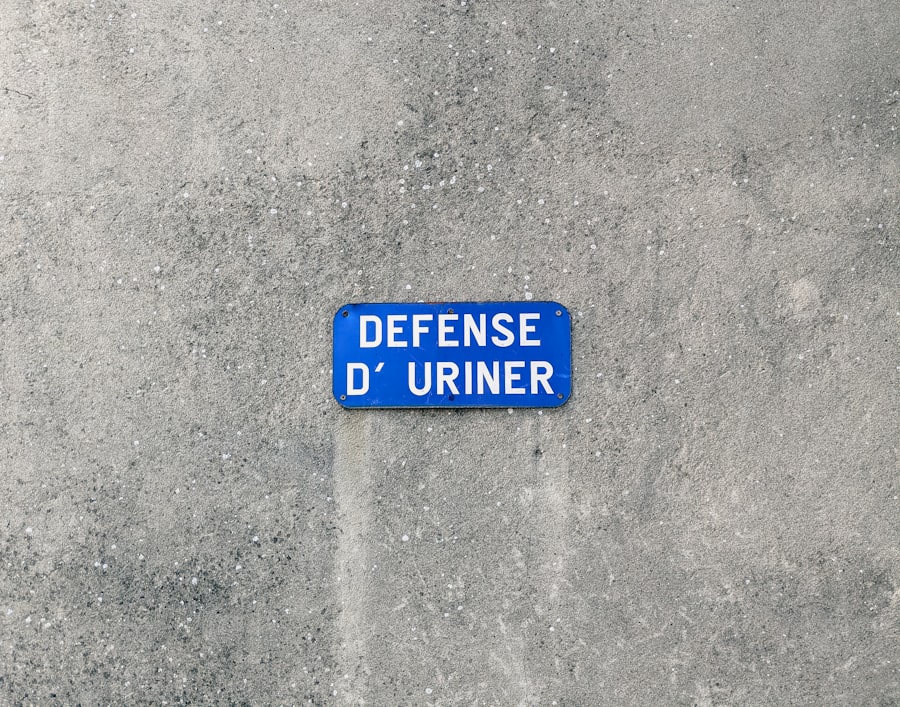In the complex landscape of the 21st century, the concept of deterrence has evolved significantly, adapting to new threats and challenges that transcend traditional military boundaries. Deterrence, at its core, is the strategy of preventing adversaries from taking hostile actions by instilling fear of significant consequences. As global dynamics shift, the mechanisms of deterrence have expanded beyond nuclear arsenals and conventional military forces to encompass a broader spectrum of tools, including cyber capabilities, economic sanctions, and information warfare.
This evolution reflects the changing nature of conflict and the necessity for nations to safeguard their interests in an increasingly interconnected world. The rise of non-state actors, technological advancements, and the proliferation of information have all contributed to a redefined understanding of deterrence. In this new era, states must navigate a multifaceted security environment where threats can emerge from various domains, including cyberspace and the information realm.
As such, the strategies employed to deter aggression must be equally diverse and adaptable. The following sections will explore the evolution of deterrence strategies, the challenges posed by cyber threats, the implications of space as a new frontier for national security, and the enduring relevance of nuclear deterrence in a world marked by terrorism and hybrid warfare.
Key Takeaways
- Deterrence in the 21st century requires adaptation to non-traditional threats such as cyber attacks, terrorism, and hybrid warfare.
- The evolution of deterrence strategies has led to the need for addressing challenges and opportunities in cyber deterrence and space protection.
- Nuclear deterrence in the modern era remains a critical component of national security, requiring careful management and diplomacy.
- Economic deterrence through sanctions and trade policies is a powerful tool in shaping international behavior and protecting national interests.
- Adapting deterrence strategies for the future requires countering disinformation, propaganda, and leveraging international alliances to address global threats.
The Evolution of Deterrence Strategies
Historically, deterrence strategies were primarily focused on military capabilities, particularly during the Cold War when nuclear arsenals served as the cornerstone of national security. The doctrine of mutually assured destruction (MAD) exemplified this approach, where the threat of catastrophic retaliation was deemed sufficient to prevent direct conflict between superpowers. However, as geopolitical landscapes shifted and new actors emerged on the global stage, the limitations of traditional deterrence became apparent.
The end of the Cold War did not signal a reduction in threats; rather, it ushered in an era characterized by regional conflicts, terrorism, and the rise of non-state actors. In response to these evolving threats, states began to diversify their deterrence strategies. The integration of economic measures, such as sanctions and trade restrictions, became a prominent tool for influencing adversarial behavior without resorting to military action.
Additionally, the advent of cyber capabilities introduced a new dimension to deterrence, where states could leverage their technological prowess to deter aggression through offensive and defensive cyber operations. This evolution reflects a broader understanding that deterrence is not solely about military might but also involves a comprehensive approach that encompasses economic, political, and informational dimensions.
Cyber Deterrence: Challenges and Opportunities

The emergence of cyberspace as a critical domain for national security has presented both challenges and opportunities for deterrence strategies. Cyber threats are unique in that they can be executed with relative anonymity and at a low cost, making it difficult for states to attribute attacks to specific actors. This ambiguity complicates traditional deterrence models that rely on clear signals and credible threats.
As a result, states must develop innovative approaches to deter cyber aggression while navigating the complexities of attribution and response. One significant challenge in cyber deterrence is the rapid pace of technological advancement. As cyber capabilities evolve, so too do the tactics employed by malicious actors.
This dynamic environment necessitates continuous adaptation and investment in cybersecurity measures. Moreover, the interconnectedness of global networks means that a cyber attack on one nation can have far-reaching implications for others, complicating collective deterrence efforts. However, this interconnectedness also presents opportunities for collaboration among nations to establish norms and frameworks for responsible behavior in cyberspace.
By fostering international cooperation and developing shared understandings of acceptable conduct, states can enhance their collective deterrence posture against cyber threats.
Deterrence in Space: Protecting National Interests
| Metrics | Data |
|---|---|
| Number of Satellites | 2000 |
| Space Debris | 9000 pieces |
| Investment in Space Defense | 10 billion |
| Number of Anti-Satellite Weapons | 15 |
As humanity ventures further into space, the strategic importance of this domain has become increasingly apparent. The militarization of space poses new challenges for national security, as nations seek to protect their interests in an environment that is both vast and largely unregulated. Deterrence in space involves safeguarding critical assets such as satellites that are essential for communication, navigation, and reconnaissance.
The potential for conflict in space raises questions about how states can effectively deter adversaries from engaging in hostile actions that could disrupt these vital systems. The development of anti-satellite weapons and other military capabilities designed for use in space has prompted nations to reconsider their deterrence strategies. The establishment of norms governing behavior in space is crucial to preventing escalation and ensuring that space remains a domain for peaceful exploration rather than conflict.
Additionally, international cooperation in space exploration can serve as a platform for building trust among nations and mitigating tensions. By fostering dialogue and collaboration in space endeavors, states can enhance their collective security while promoting responsible behavior in this emerging frontier.
Nuclear Deterrence in the Modern Era
Despite the evolution of deterrence strategies across various domains, nuclear deterrence remains a cornerstone of national security for many states. The threat posed by nuclear weapons continues to shape international relations and influence strategic calculations. In an era marked by regional conflicts and rising tensions among nuclear-armed states, the principles of nuclear deterrence are being tested as never before.
The concept of credible deterrence hinges on maintaining a robust nuclear arsenal while ensuring effective communication with potential adversaries regarding red lines and consequences. However, the modern era presents unique challenges to nuclear deterrence. The proliferation of nuclear weapons among states with varying levels of stability raises concerns about accidental launches or miscalculations leading to catastrophic outcomes.
Additionally, advancements in missile defense systems complicate traditional deterrent calculations by potentially undermining the effectiveness of retaliatory strikes. As such, states must navigate a delicate balance between maintaining credible deterrent capabilities while pursuing arms control measures that reduce the risk of nuclear conflict.
Deterrence in the Age of Terrorism

The rise of terrorism as a prominent threat has necessitated a reevaluation of traditional deterrence strategies. Unlike state actors who can be deterred through military or economic means, terrorist organizations often operate outside conventional frameworks and are motivated by ideological goals rather than territorial ambitions. This poses significant challenges for states seeking to deter terrorist activities while ensuring domestic security.
Intelligence sharing, counter-radicalization efforts, and community engagement play crucial roles in preventing terrorism at its roots. By addressing underlying grievances and fostering resilience within communities, states can undermine the appeal of extremist ideologies and reduce recruitment into terrorist organizations.
Furthermore, international cooperation is essential in combating transnational terrorism; collective efforts can enhance intelligence capabilities and disrupt networks that facilitate terrorist activities across borders.
Economic Deterrence: Leveraging Sanctions and Trade Policies
Economic deterrence has emerged as a powerful tool for states seeking to influence adversarial behavior without resorting to military action. Sanctions and trade policies can serve as effective means of signaling disapproval while imposing tangible costs on nations that engage in aggressive actions. The use of economic measures has gained prominence in recent years as states grapple with complex geopolitical challenges that require nuanced responses.
However, economic deterrence is not without its limitations. The effectiveness of sanctions often hinges on international cooperation; unilateral measures may be less impactful if other nations continue to engage economically with targeted states. Additionally, sanctions can have unintended consequences that disproportionately affect civilian populations rather than political elites.
As such, states must carefully consider the design and implementation of economic measures to ensure they achieve desired outcomes without exacerbating humanitarian crises or undermining long-term stability.
Deterrence in the Information Age: Countering Disinformation and Propaganda
In an era characterized by rapid information dissemination and digital communication, disinformation campaigns pose significant challenges to national security and public trust. State and non-state actors alike leverage social media platforms to spread false narratives and manipulate public opinion, undermining democratic processes and sowing discord among populations. Deterrence strategies must now extend into the information realm to counter these threats effectively.
To address disinformation campaigns, states must develop comprehensive strategies that encompass both defensive measures—such as enhancing cybersecurity protocols—and offensive tactics aimed at exposing false narratives. Public awareness campaigns can play a crucial role in educating citizens about misinformation tactics while fostering critical thinking skills necessary for navigating an increasingly complex information landscape. Furthermore, international collaboration is essential in combating disinformation; shared intelligence and coordinated responses can enhance collective resilience against attempts to undermine societal cohesion.
Hybrid Warfare and Deterrence: Adapting to Non-Traditional Threats
The rise of hybrid warfare—a blend of conventional military tactics with irregular methods such as cyber attacks, disinformation campaigns, and economic coercion—has transformed the nature of conflict in the 21st century. States must adapt their deterrence strategies to address these non-traditional threats effectively. Hybrid warfare blurs the lines between war and peace, making it challenging for nations to respond appropriately without escalating tensions.
This requires enhancing situational awareness through intelligence sharing while fostering resilience within societies vulnerable to manipulation or coercion. By developing robust frameworks for responding to hybrid threats—whether through targeted sanctions or coordinated military exercises—nations can deter adversaries from pursuing aggressive actions that exploit vulnerabilities across multiple domains.
The Role of International Alliances in Deterrence
International alliances play a pivotal role in shaping deterrence strategies by fostering collective security arrangements among member states. Organizations such as NATO exemplify how alliances can enhance deterrent capabilities through shared resources, intelligence sharing, and coordinated military exercises. The principle of collective defense—where an attack on one member is considered an attack on all—serves as a powerful deterrent against potential aggressors.
However, maintaining unity within alliances can be challenging amid shifting geopolitical dynamics and divergent national interests. States must navigate complex relationships while ensuring that collective deterrent postures remain credible and effective. This requires ongoing dialogue among allies regarding threat assessments, resource allocation, and strategic priorities.
By reinforcing commitments to mutual defense while adapting to emerging challenges—such as cyber threats or hybrid warfare—alliances can enhance their collective deterrent capabilities in an increasingly uncertain world.
Adapting Deterrence Strategies for the Future
As the 21st century unfolds, the landscape of deterrence continues to evolve in response to emerging threats and challenges. States must adapt their strategies to encompass a diverse array of tools—ranging from military capabilities to economic measures and information warfare—to effectively deter aggression across multiple domains. The complexities introduced by cyber threats, hybrid warfare, and non-state actors necessitate innovative approaches that transcend traditional paradigms.
Looking ahead, it is imperative for nations to foster international cooperation while developing comprehensive frameworks for addressing contemporary security challenges. By embracing adaptability and collaboration—both within alliances and among global partners—states can enhance their collective resilience against evolving threats while safeguarding national interests in an increasingly interconnected world. The future of deterrence lies not only in maintaining credible capabilities but also in fostering dialogue that promotes stability and peace amid uncertainty.
In the context of deterrence in the 21st century, the article on In the War Room provides a comprehensive analysis of modern strategies and challenges faced by nations in maintaining effective deterrence. The piece explores how technological advancements and shifting geopolitical landscapes are reshaping traditional deterrence theories, making it essential for policymakers to adapt their approaches to ensure national security in an increasingly complex world.
WATCH THIS! The Secret Russian Weapon That Terrifies NATO
FAQs
What is deterrence in the 21st century?
Deterrence in the 21st century refers to the use of military, economic, and diplomatic strategies to prevent an adversary from taking a particular action by convincing them that the costs or risks outweigh the benefits.
How has deterrence evolved in the 21st century?
In the 21st century, deterrence has evolved to include not only traditional military capabilities, but also cyber, space, and economic tools. Additionally, the interconnected nature of the global economy and the rise of non-state actors have added complexity to the deterrence landscape.
What are the key components of deterrence in the 21st century?
The key components of deterrence in the 21st century include credible military capabilities, effective intelligence and surveillance, robust cyber and space capabilities, economic sanctions, and diplomatic efforts to build alliances and partnerships.
What are the challenges to deterrence in the 21st century?
Challenges to deterrence in the 21st century include the proliferation of advanced military technologies, the difficulty of attributing cyber attacks to specific actors, the rise of non-state actors, and the potential for miscalculation or escalation in a crisis.
How does deterrence apply to modern threats such as terrorism and cyber attacks?
Deterrence in the 21st century applies to modern threats such as terrorism and cyber attacks by seeking to dissuade adversaries from engaging in these activities through a combination of military, economic, and diplomatic measures. This may include the use of offensive cyber capabilities, targeted economic sanctions, and international cooperation to combat terrorism.




